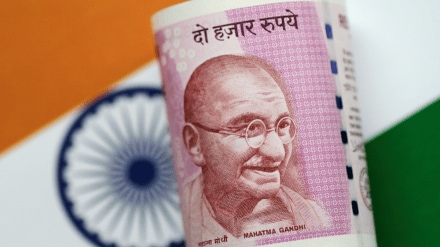A series of high frequency indicators show that India is set to grow at a robust pace even as the rest of the world goes through a period of sustained economic turbulence. A report by DSP Mutual Fund looked at healthy GST collections, volume of petroleum products sold (which are often seen as a proxy for consumption), along with high electronic toll collection, among indicators that showcase bustling economic activity as the general sentiment continues to soar. Here’s a look at the other factors that present a bright future for the Indian economy.
India and Emerging Markets
Despite India’s resilience, the reason behind its premium valuations compared to other emerging market peers is not due to its own outperformance, but the underperformance of other countries. However, the DSP MF report stated that the MSCI Emerging Market Index has rallied 26% while Nifty 50 has been more or less flat over the past three months. As a result, the premium that Indian equities commanded fell. This was mostly demonstrated by the high outflow of FIIs in January. Nevertheless, sustained consolidation and steady earnings growth can make India an attractive investment destination once again. With a predicted EPS of 980-1000 in Nifty 50, DSP Mutual Fund suggested raising equity weights as the index nears the range of 17,000 to 17,400.
Bond Market
Indian corporations pay a premium on their bonds compared to government securities. DSP Mutual Fund uses the bond yield spread (a metric that subtracts the ongoing 10-year G-Sec from corporate bonds that have a similar maturity time) to garner an insight into the future borrowing conditions of India Inc. Whenever there has been a hike in the domestic repo rate, the corporate bond spreads often rise concurrently.
However, during this monetary policy tightening cycle, even as the RBI has increased the repo rate by 225 bps in nine months, DSP MF noted that corporate bond spreads are yet to show a meaningful increase. A lower corporate bond spread indicated that India Inc will be able to access capital at lower interest rates compared to the peak rates of the previous monetary policy cycles, leading to better long-term growth prospects.
India’s IT Sector
The correction seen in the IT sector globally might not be over since there is further room for consolidation as a result of the impending slowdown and excessively high valuations. Nasdaq 100 slid 28% from its recent peak while Nifty IT has fallen 22%, while the 1-year forward price-to-earnings multiple for Nasdaq has shrunk from 35 at its peak to 25 now, while for Nifty IT the multiple is down from 37 to 23. DSP Mutual Fund suggests that this is an ideal time for investors to enter the IT sector as the long-term earnings trajectory is still attractive.
Supply Chains
DSP Mutual Fund’s in-house indicator to analyze supply side pressures showcased that the COVID-related pressures have eased and the supply shock has normalized. The indicator comprises freight rates, shipping freight, and the backlog of orders at major manufacturers, all of which have eased since its peak in mid-2021. The indicator fell back to pre-COVID levels, which will allow for an accelerated decline in the pace of inflation and would give central banks more room to pause their rate hikes.
